BIOS -
BIOS is an acronym that stands for Basic Input/Output System. It is meant to control your product at a very low level. As of right now there are three regularly used BIOS formats (there are actually more than that but there are three common ones). These are the AMI (American Megatrends Incorporated), Award, and Phoenix. The BIOS on the P8Z77-V is Asus’ fourth generation of their UEFI BIOS. It is very quick and easy to get around in. Unlike some of the other boards we have tinkered around with there is no lag when you click on a setting and there is also no menu listing for numbers like BCLK or voltage. Instead you can manually enter the number you want directly into the system. Check out our video below to see everything going on inside the UEFI on the P8Z77-V
Overclocking –
Overclocking the P8Z77-V was interesting to say the least. When we first attempted our max overclock we were stuck at around 4.7GHz. Eventually as with the –M Pro we found that a minor voltage adjustment to the iGPU did the trick and we hit our max of 4.8GHz. This did require a little more voltage than we saw with the –M Pro or the Maximus V Gene with a final voltage of 1.38 for our max stable OC. 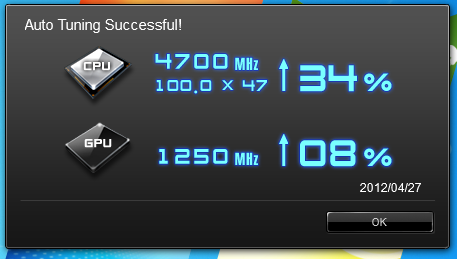
Still we wanted to see if we could get things running even faster. Here we pushed our CPU up to 1.44Volts (and increased the cooling on it) and then tried 5GHz. At 5GHz we could not get into Windows at all. However, at 4.9GHz we were able to get into Windows and run a few of our tests. In particular we were able to run HyperPi at 4.9GHz and were pleased to see that the temps were not too bad although they were certainly not 24/7 temps. We maxed out around 82c during the 32M run of HyperPi. 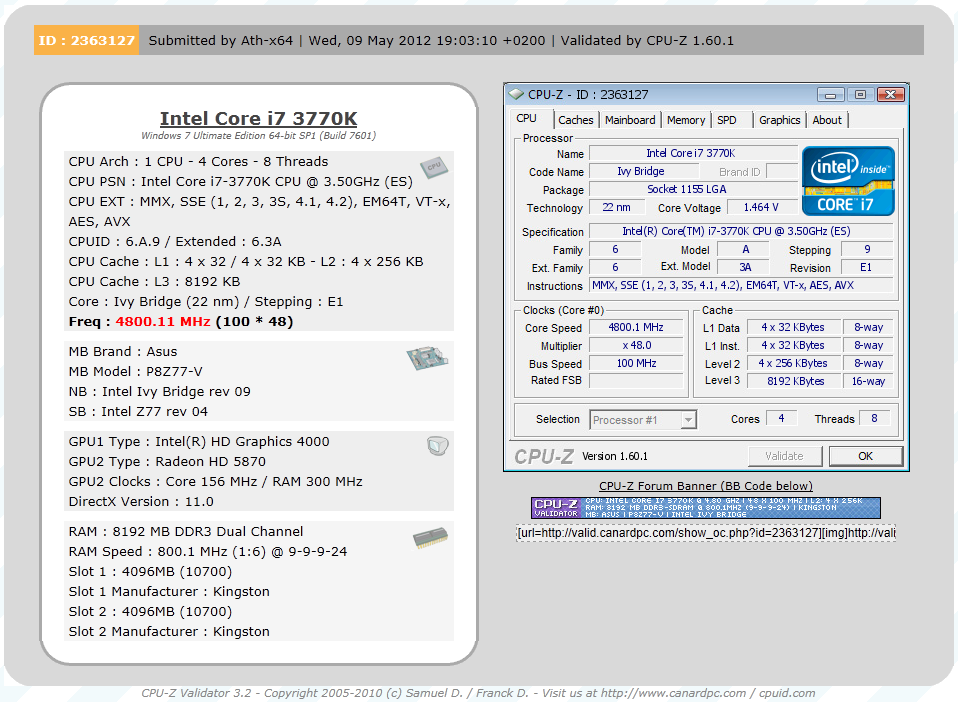
Of course overclocking is a picky subject. I can buy to identical CPUs from the store and they will not always perform the same way under stress. This is the same with motherboards, RAM and GPUs. So again it is important to keep in mind that our results represent a specific hardware configuration. Yours may be similar but will rarely be identical.
Overclocking Tools -
Asus’ overclocking tool is TurboV EVO. This once standalone utility is now embedded into their AISuite II application. Normally we would take a few screenshots and then cover the highlights in text. However, AISuite II has become so large and includes so many functions and other utilities that we felt that a video would cover the details better than what we could do in even one hundred words. We do have some screen shots for you though as we would never want to leave those out.
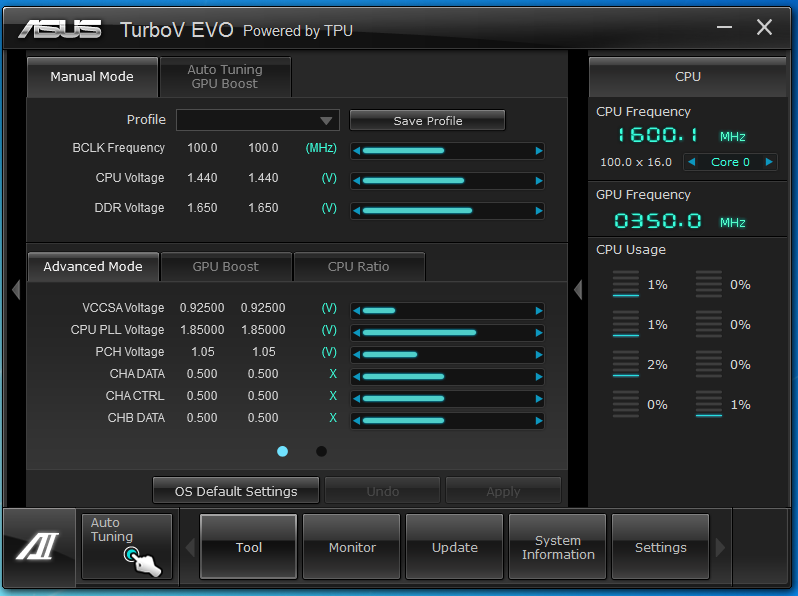 |
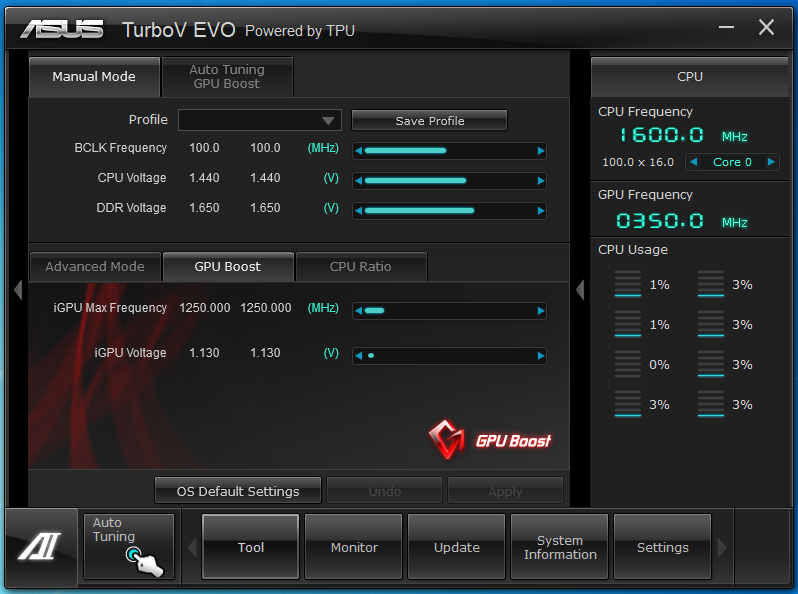 |
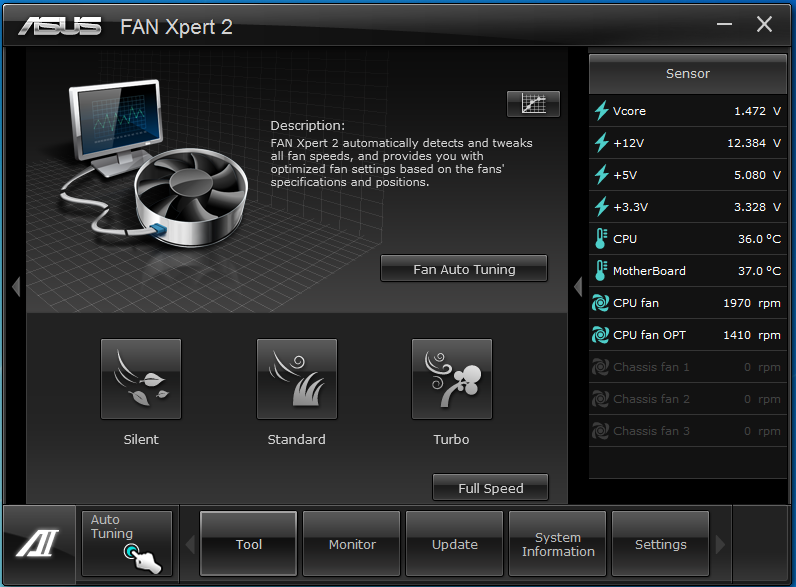 |
In general as you can see from the video and screen shots above the overclocking tools included with the P8Z77-V are very impressive considering this is not what would normally be considered an enthusiast motherboard. We have to give Asus credit here for building a suite of tools that provide this level of control and are as intuitive as AISuite II is.
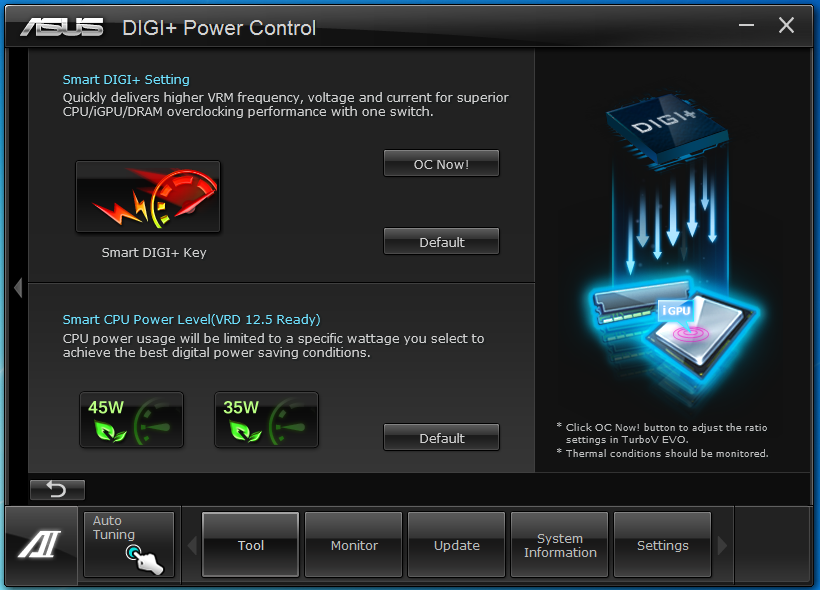 |
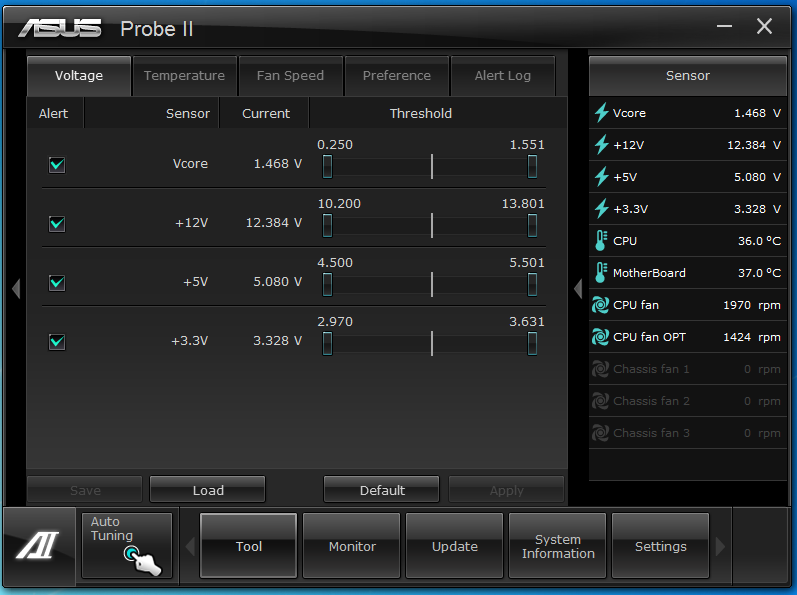 |
The Test System and Comments -
Our test system is built on an open bench. This has two effects on testing. First it allows us to see everything and also to setup and disassemble the test rigs quickly. Second it means that we cannot gauge the potential air flow found in a normal case. The air is pretty stagnant; some may say this is a great neutral testing method and it can be. However, it does mean that the temperature reading taken off of the components are not accurate to what an average consumer would see. This means that your thermal performance will vary from what we see here.
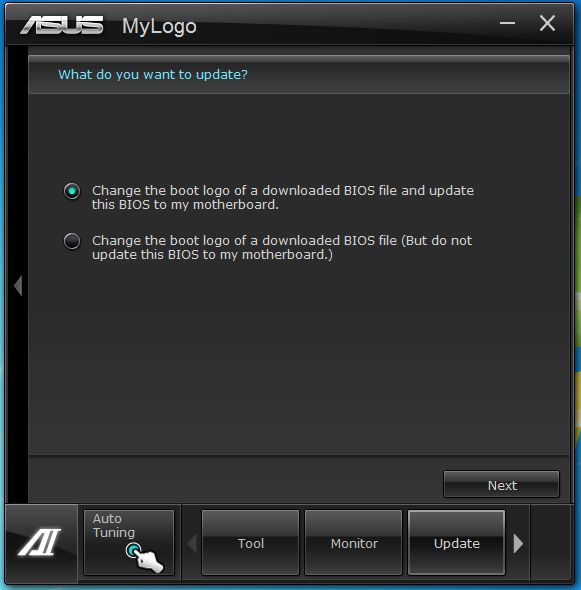 |
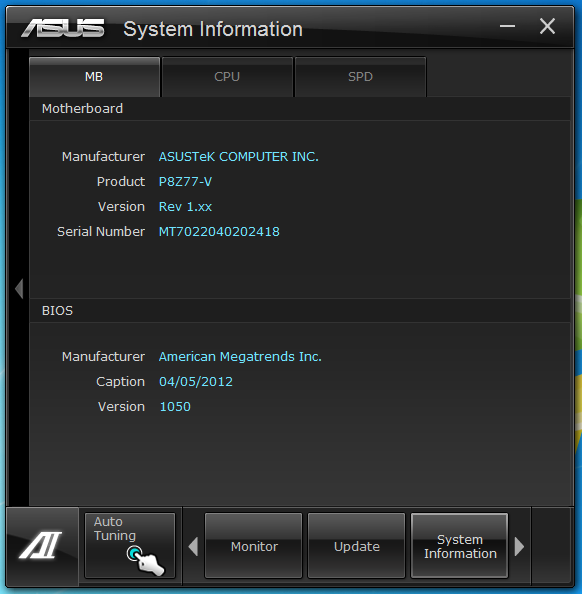 |
Setting up the P8Z77–V was very simple thanks to Asus’ InstALL option in the drivers and utilities DVD. As we have mentioned before you do have to be careful and also make sure you run a custom installation so you are not stuck with Chrome as your browser or Norton as your anti-virus. We wish that these were opt-in instead of opt-out, but you cannot have everything.
One the OS was installed and the drivers in place things were very smooth indeed. Asus gives you quite a few nice features and options in their software. We will cover most of these in their respective place in the performance section.
Performance testing overview -
Our testing is a little different than most. We combine both synthetic and real-world applications to simulate the types of performance common to the individual products. For motherboards this means that we run roughly six synthetic tests and two real-world. We will be expanding the real-world testing in the near future. But there is more to performance than just the raw numbers. As there are multiple components and sub-components on a motherboard there each item can have a distinct impact on the way the product will perform once you get it in your system. It is important to note not only the actual results but what they mean to you as a potential consumer. We will try to give this information to you. But we do not just cover the performance aspects that are measurable. We also talk about the components that might not have a direct benchmark. These are items like Audio Quality, ease of use and installation.
Section 1 Subsystems
Memory -
Memory performance is very important on a motherboard, especially when you have a CPU with multiple cores and threads. If you have slow memory your cores and threads can become starved for data to execute. To test memory performance we run Sisoft’s SANDRA. These two combine to not only give us accurate numbers but to validate each other. For testing at stock speeds the memory is hard set to 1600MHz while overclocking testing is done at the highest stable speed for the voltage of 1.65v this is due to the different memory dividers for each CPU. As such, the memory speeds will vary greatly. This means that the overclocked numbers are a little misleading and while they can show a trend are really only included to show if a board has a problem with memory performance at high clockspeeds.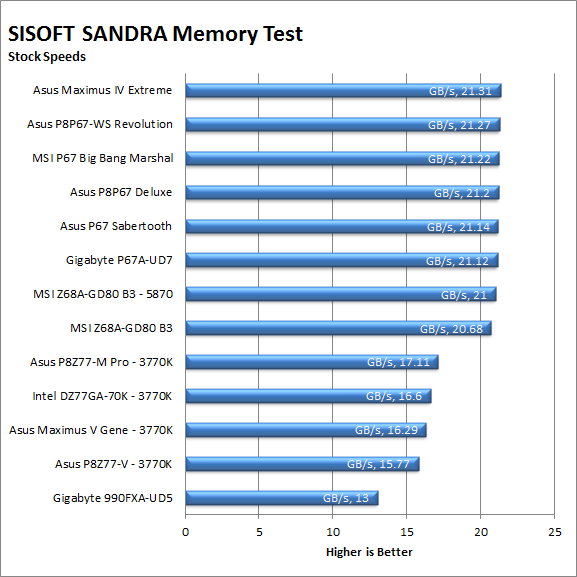
Memory performance on the P8Z77-V is not exactly where we would expect it to be for a Z77 based board (running Ivy Bridge). We found it at the lower edge of our Z77 boards that we have tested at least at stock speeds. When we overclocked the CPU things evened out and it fell right into line with the other Z77 boards we have tested. This was a little odd considering the fact that we did not change the memory divider here; just the multiplier on the CPU. We imagine that this issue will be corrected in future BIOS releases though. In practical terms the lower memory bandwidth could mean slower transcoding performance and performance issues when working with a lot of image files in an image editor (the more pictures you have open the greater the memory impact).

Drive performance -
Drive performance is also one of the major subsystems that goes to make up the performance of a motherboard. For our testing we use Sandra and AIDA64 again. We only test with single drives for each type of controller present on the motherboard (unless it is a professional product where we will use RIAD 5 and/or 10). We have also begun using a Seagate PS-110 USB 3 external HDD and a Kingston HyperX USB 3.0 Flash drive for our USB 3.0 performance. As a side note, we include the overclocked numbers here to make sure (again) that you are not going to see a major drop in performance due to minor instabilities at high clock speeds.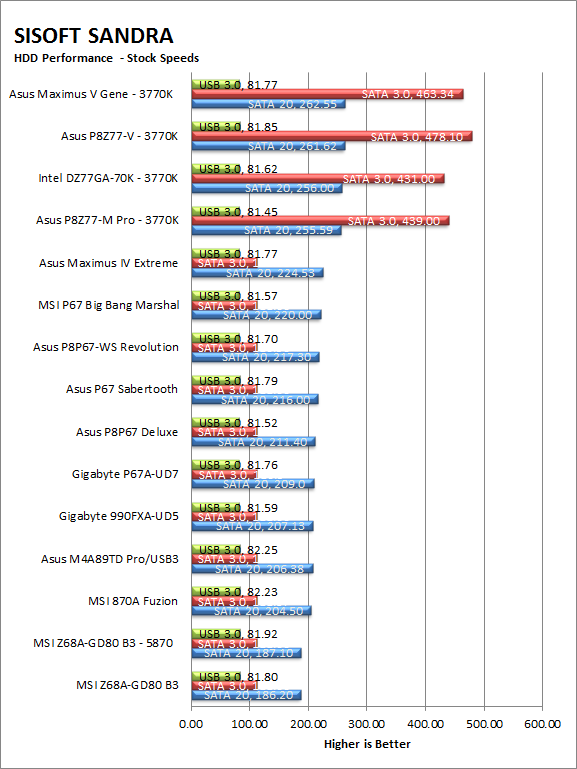
The HDD performance is right up with the rest of the Z77 board (in fact a little faster than some we have tested). This should help to balance some of the memory performance issues we saw at stock speeds. Of course that does not work for every program or application, but for many it will. In practical terms solid HDD (ok SSD) performance means you should have faster application launches, level loads and also faster file transfers as the drive are able to write faster. 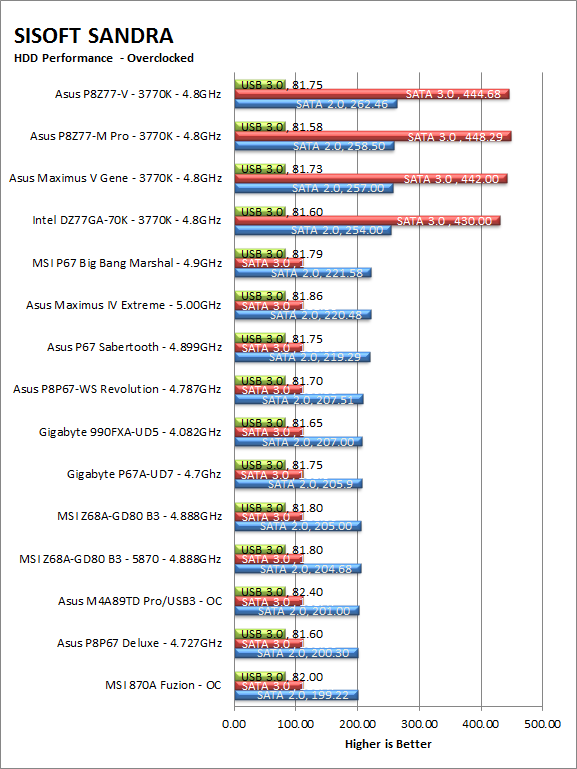
For USB 3.0 performance you also get an extra bonus when using an Asus board. If your USB 3.0 flash drive or enclosure supports it you can get some extra performance from it using the USB 3.0 Boost that Asus gets with both the Intel and ASMedia controllers. On the P8Z77-V we saw a nice jump in performance on our Kingston DT HyperX 64GB flash drive. Normal performance put it at about 254MB/s while running under turbo mode got us speeds as high as 273MB/s. This performance is better than SATA 2 SSD performance and that is quite impressive.

Power -
Power efficiency is another of those misnomers that we get caught up in. We hear about idle states and power gates. But what does that mean to you and I? On the surface having power management that reduces idle power sounds great and can be a benefit to someone that leaves their system on for long periods of time (and inactive) but how a system handles power under load and the delta between the two states is often more important than the idle power usage numbers. We use only P3 Kill A Watt instruments for measuring power. 
Asus has been utilizing hardware based energy processing units in their motherboards for a while now and have been one of the better companies when it comes to power efficiency. Granted at the top of their line up you are not going to get a lot of these tools, but at that point you are really pushing your system anyway and are probably not looking for that. Still during our testing runs with the EPU software off we saw pretty good power usage numbers. The P8Z77-V was not the best for power draw, but it was one of them. When we ran at stock with the EPU set to power saving we were able to really drop the idle power numbers down, but all that went away when we started using the system 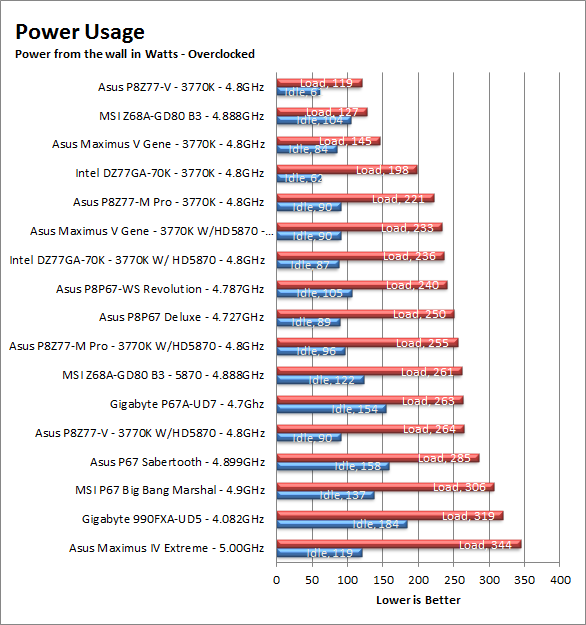
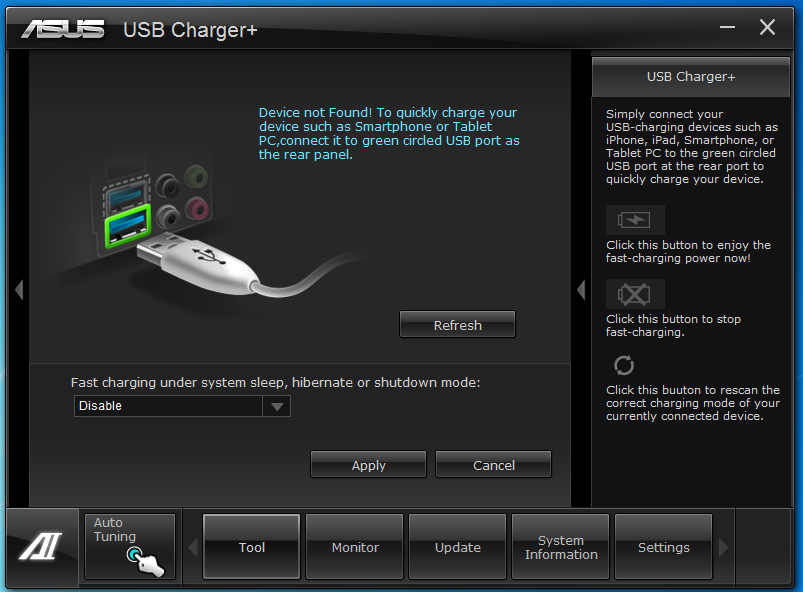 |
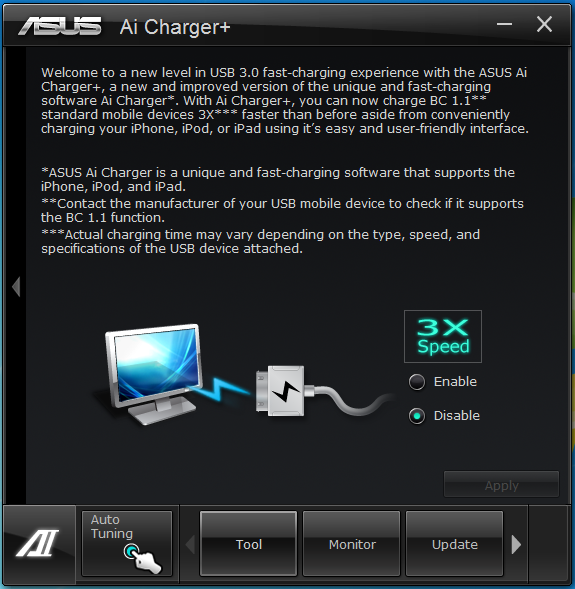 |
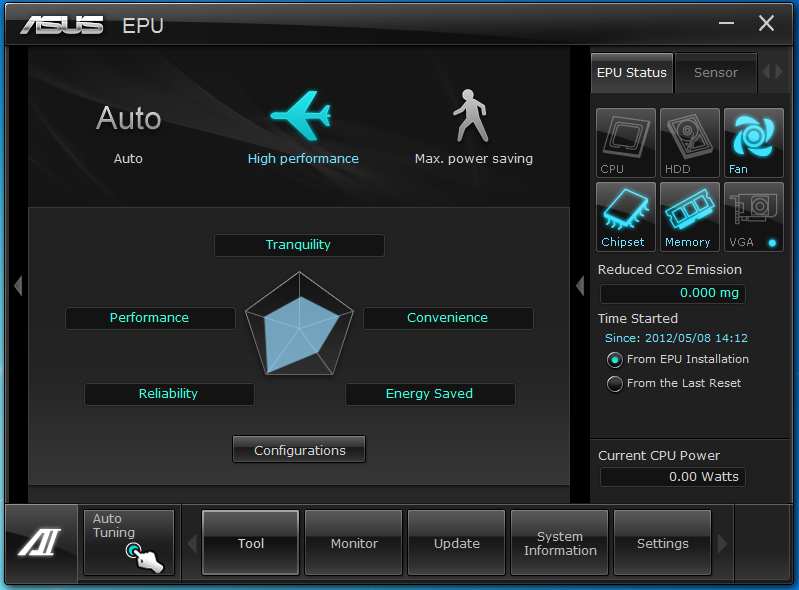 |
Cooling (Board Level) -
Board level cooling is an important factor in product performance and longevity. Components like the chipset, VRM modules and even capacitors need to be kept relatively cool to prevent failure. As these parts are made of silicon, they have a thermal breakdown threshold; or melting point. At that temperature the actual transistors built into chip will begin to deform and break down. Granted, the threshold is often very high, but you still need to make sure that components stay away from this level of heat for longer product life. 
The cooling on the P8Z77-V is better than what we saw on the –M Pro and even the Maximus V Gene, still you might want to make sure you have good airflow over is in your case of choice. We saw a decent effect even from the hot air coming from the HD 5870 we use as an add-in GPU. Of course as we showed you in our Video of AISuite II you get some extra cooling options when you run any Asus board. 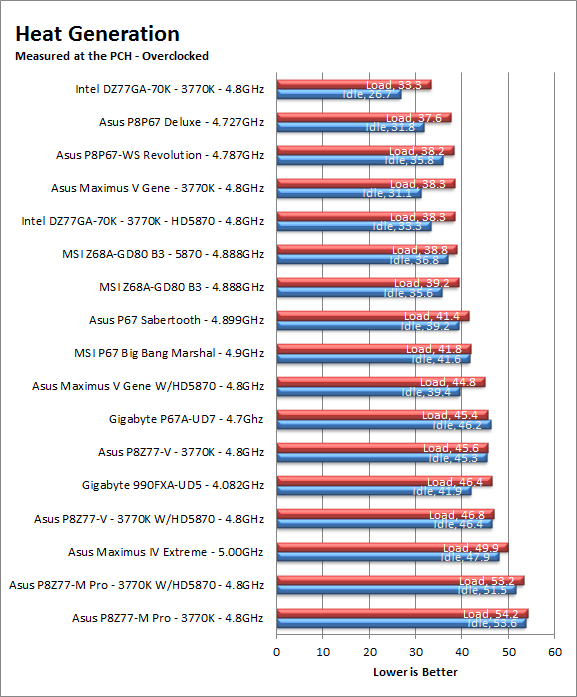
FanXpert 2 is a handy utility for tuning your cooling on the P8Z77-V. After running the auto tuning function you can change your cooling profile based on what you are doing. If you need a quiet system, you can have that just like you can have all of your fans running full blast when you need it as well. 
Audio -
Audio is highly subjective. What we find pleasing may sound “off” to you. That is always going to the problem with testing audio; results will vary too widely depending on the tastes of the listener. However, there are ways of measuring the audio output with an objective ear. There is also the issue of audio causing performance issues in gaming and video playback. The reason this is a potential source of concern is that all onboard audio CODECs (Compression/Decompression) are CPU controlled. This means that while the audio chip controls the audio levels and effects of the audio the actual work is done on the CPU. Usually this will not be a problem with today’s powerful CPUs. Even the lower and consumer level products can handle high-end audio these days. But again there is the chance that a bad design or software will hinder your system and performance. On the other side the limits of board space, cost, etc will also prevent the level of audio quality you can get from an add-in board. We test all audio parts with three media types, Movie (DVD), MP3 Music, and Gaming. These are pushed to our Tec On model 55 Tube Amp to see if we can detect any signal issues in the reproduction.
The audio on the Asus P8Z77-V is handled by a Realtek ACL892 8-Channel audio controller (well really more of a CODEC). This is enhanced by DTS Ultra PC II and DTS Connect and features Asus’ absolute pitch audio enhancement for lossless Blu-ray disk audio playback. During usage the audio was good, but not award winning. The post processing software does add a little life to it, but it is not the same as you get with hardware that can handle the audio in the first place. Still it is good to see that Asus is working to improve this often overlooked area in computing.
Networking -
This one is something that is a requirement anymore. If you have a computer, the chances are good (like 99%) that you are also connected to high-speed internet. With this you need a good and solid LAN chip to make sure that your data flows properly out and back.
On the Asus P8Z77-V (and the rest of the –V line up including the Deluxe and the Premium) you have a couple of networking options. For wired networking you can use an Intel 82579V Gigabit Ethernet controller that is going to give you some great performance and reliability. However, if you do not want cables running all over the house you also have an option for a Qualcomm wireless controller. This will get you single 2.4GHz band support with speeds up to 150Mb/s (802.11 b/g/n). 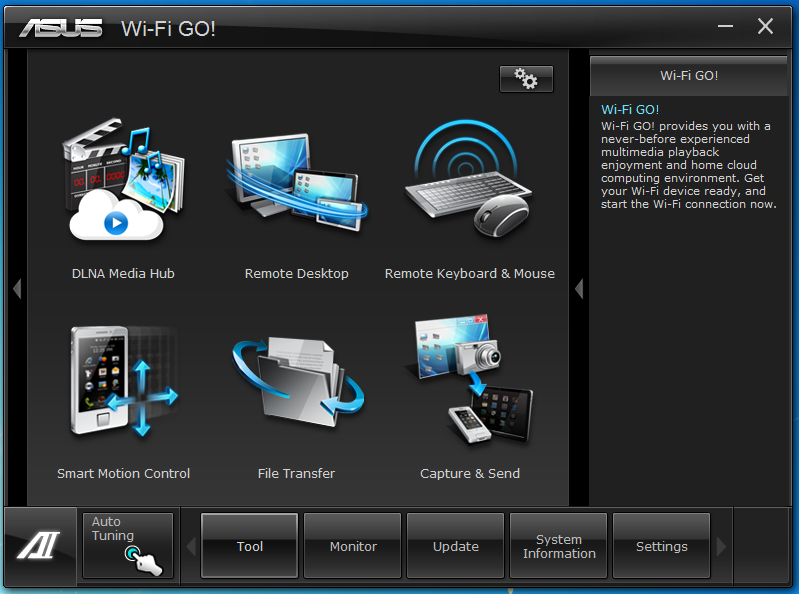
If you use the wireless you also have the option to use Asus WiFi Go! software and setup your system as a DLNA streaming media station. You can also control your system remotely using the WiFi Go! app available from both iTunes and the Google Play store. You need to search for Wi-Fi GO! Remote to get what you are looking for. You will also need to download the server utility from Asus’ website so you can get the wireless on the P8Z77-V working the way it is supposed to.
 |
 |
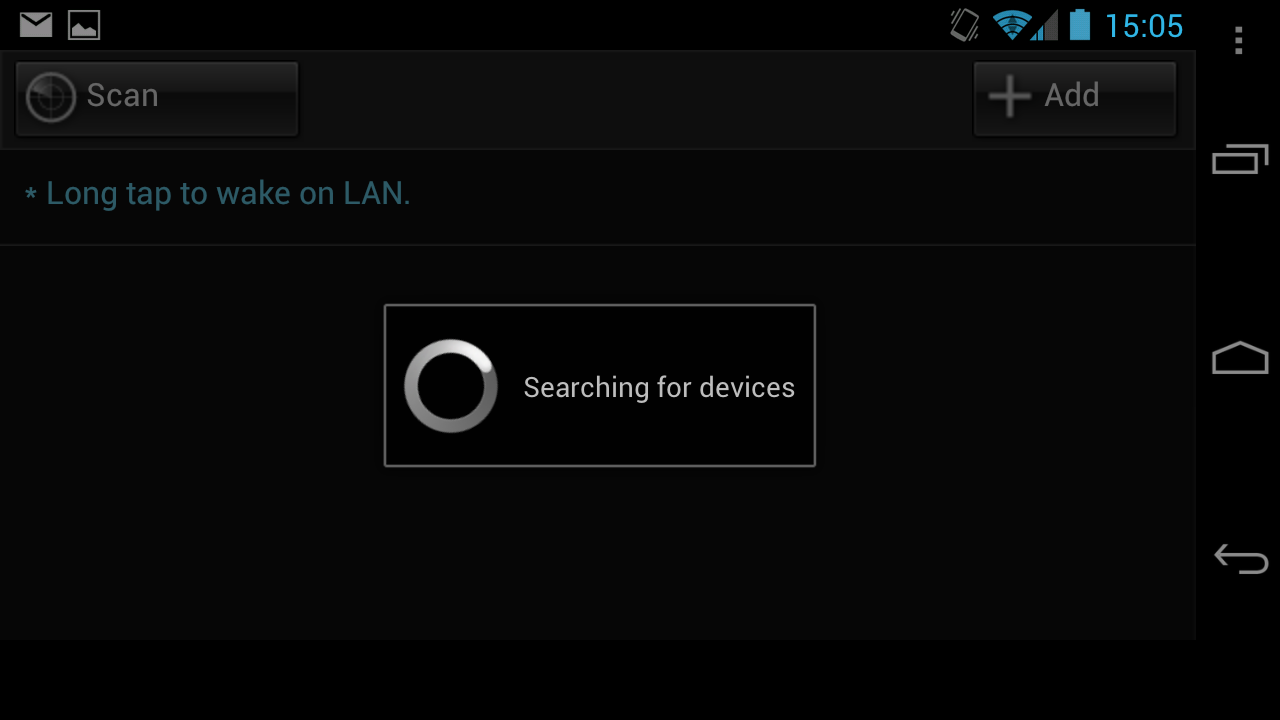 |
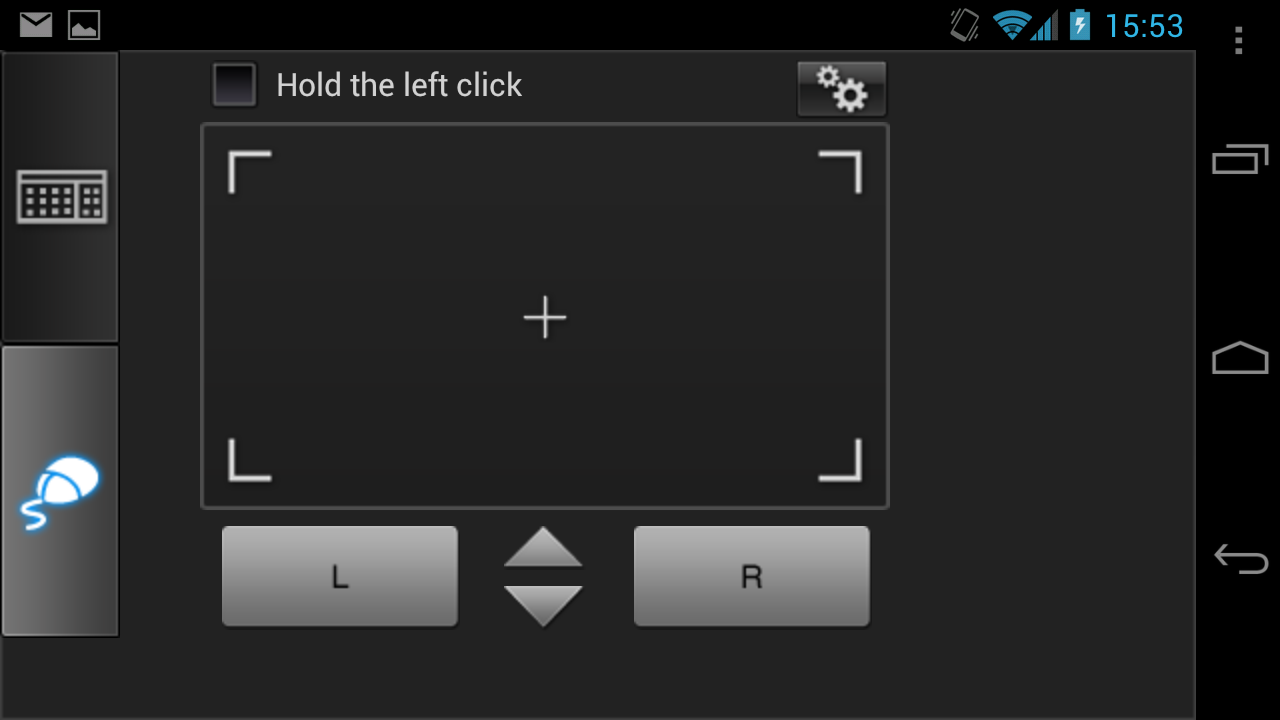
Section II - Performance Tests
Synthetics
In this section of testing we cover the synthetics. These are tests that run a scripted sequence of internal APIs or that use another installed application to perform a series of scripted events. They are great in that they can provide reproducible results across various platforms. On the down side, synthetic tests can be fooled with driver tweaks and optimizations. In some cases it is necessary to rename the .exe file to something generic to discover if this is the case. In any event when this is needed (when a test shows a drastic difference in performance over the renamed exe) we will note this and show both results for comparison.
PCMark7 -
PCMark7 is the latest general performance test from FutureMark. As each generation of this benchmark has evolved and developed we have watched them add more and more realistic tests to this suite. With this generation we find more media tests, (audio and video transcoding) moving of large files, multiple web page rendering, and much more (the even added DX10 gaming). We use the Overall Performance and Common Usage suites in our testing.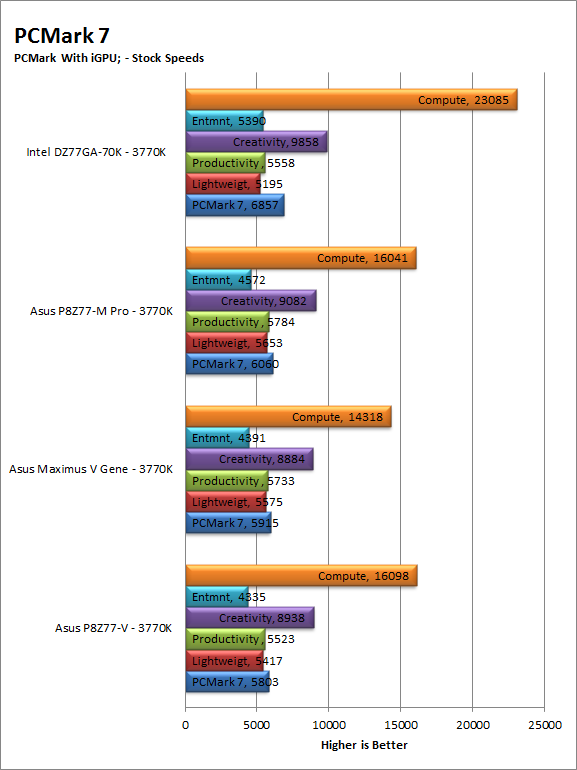

Under PCMark 7 the P8Z77-V does fairly well for its place in the market. We do see a little bit of the memory performance showing up under the CPU only testing especially during stock runs. When the P8Z77-V is overclocked or has the HD5870 in the system the numbers stabilize and look much better. In practical terms this means that something is slowing the system when it has to rely on the iGPU for graphics at stock speeds. We are not overly worried though as we know that Asus will be sure to have a new BIOS out to correct the issue. 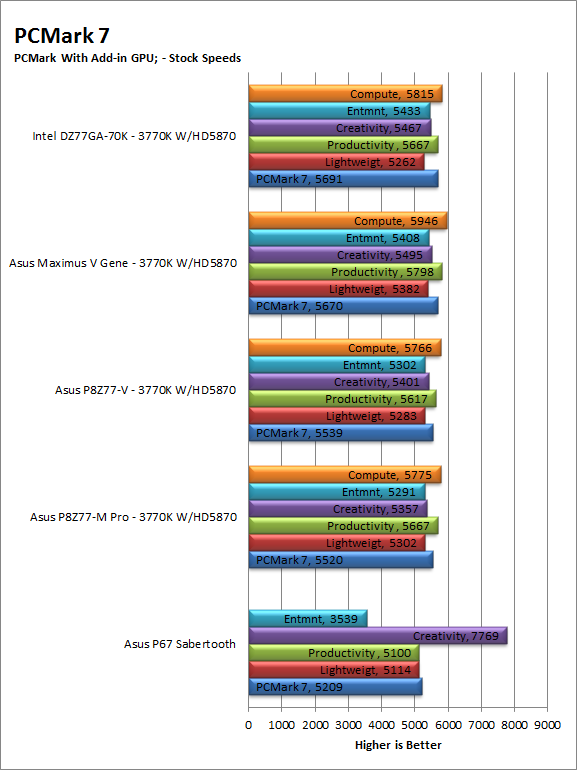
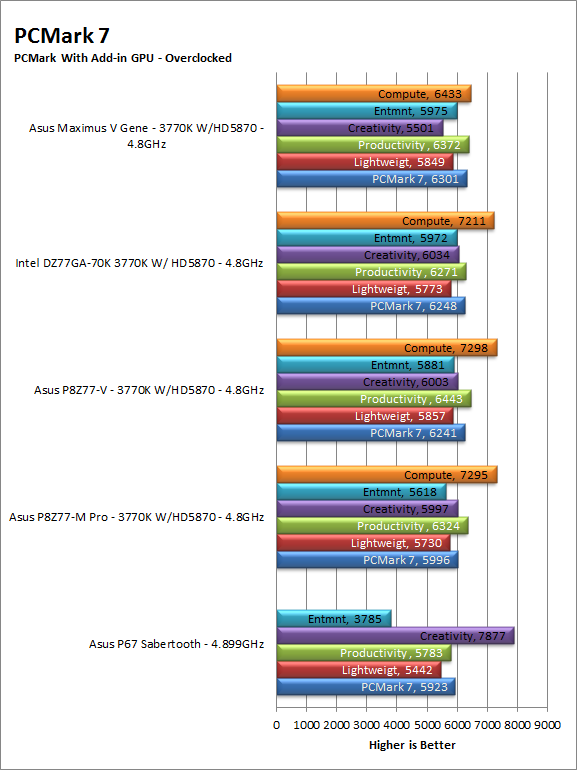
3DMark 11 -
3DMark 11 is the other Futuremark test that we run on our motherboards. This test simulates the typical tasks that a GPU (and system) would have to perform to provide you with a good gaming experience. It is based on the DX9, DX10 and DX11 engines but can only be installed on Windows Vista or later. The suite of tests covers DX9, DX10, and of course DX11 rendering; it also covers AI computations and physics. That’s right I said Physics the latest version of 3DMark uses a Havok physics engine. This removes the advantage that nVidia had with 3DMark Vantage.
| 3DMark 11 iGPU | 3DMark 11 iGPU - Overclock |
 |
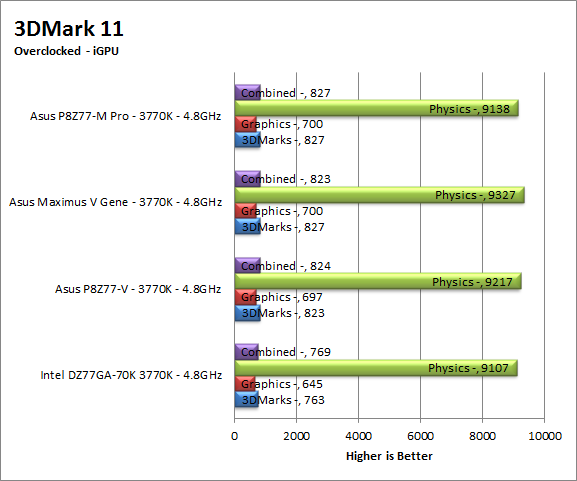 |
With the GMA 4000 as the primary display adapter the P8Z77-V falls into line just above Intel’s DZ77GA-70K. It is also not too far behind the Maximus V Gene either so in general you can probably expect pretty much the same gaming experience from all four of these boards when using the iGPU.
| 3DMark 11 HD5870 | 3DMark 11 HD5870 - Overclock |
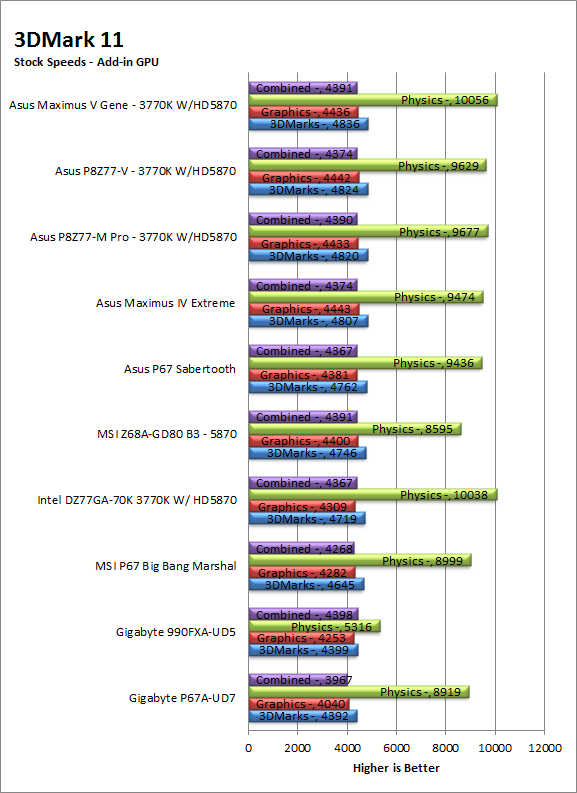 |
 |
Now with our HD 5870 V2 from Asus we find the numbers look a little different. Here, and at stock speeds, the P8Z77-V is right behind the Maximus V Gene and in third place when we overclocked the board to 4.8GHz. This could be a good indicator of gaming performance.
HyperPi 0.99b -
HyperPi is a front end application that allows you to easily run multiple instances of the SuperPi application. SuperPi, for those that are not familiar with it, is an application that measures the time it takes to calculate the number Pi out to as many as 32 million places. This calculation is then checked and run multiple times (up to 24 for a 32M run). This test stresses the CPU, Memory and HDD as data is handed off between the three. If there is a weak link, HyperPi will show it. For our testing we run the 32M test on as many cores (and threads) as the CPU has available. The slowest CPU time is then recorded. 
Here is something interesting; although the P8Z77-V showed us memory bandwidth that was not where other Z77 boards are (in terms of RAW bandwidth) we see it do quite well in our HyperPi testing. Typically when we see that type of memory issue the boards do not do well here unless they have exceptional HDD performance and while the P8Z77-V has good HDD performance it was not really enough to get the times we are seeing here. Still this is a good thing for anyone that will be using the P8Z77-V for complex computations (including transcoding). 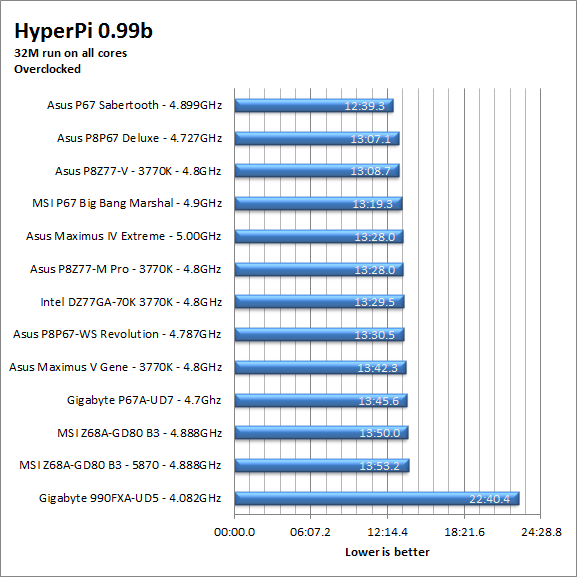
Cinebench R11.5 -
Cinebench R11.5 is the 11th release of Maxon’s rendering test. This test is based off of the Cinema 4D engine, which is one of the industry standard tools for digital animation. It is a powerful product with many different modules that can be “plugged” into it to increase its effectiveness. With Cinebench you get to see how your computer would do using this application. There are two tests; one tests the CPU’s ability to render an image across multiple cores or threads. The other tests your systems ability to handle OpenGL based rendering.
| Cinebench R11.5 CPU Render | Cinebench R11.5 CPU Render Overclock |
 |
 |
The P8Z77-V looks like it is up to the stress that Cinebench puts it through. This should be good news for anyone that wants to use some of the more complex image manipulation programs out there. These often require your system to render the image in a similar way.
| Cinebench R11.5 OpenGL | Cinebench OpenGL Overclock |
 |
 |
For OpenGL rendering using only the GMA 4000, well this is not meant as a professional grade GPU so we are not surprised to see the numbers where they are for all of the Z77 boards.
Section III - Performance Tests
Real-World
Here we have two tests that are designed to put the performance of the motherboard and its subsystems to the test. Both require good CPU, Memory, HDD and even to a lesser extent audio and network performance. The two tests we chose were Lightwave 3D 9.6 and AutoGK 2.55. We will be adding at least one more real-world test to this battery in the near future, but for now these two cover quite a bit.
Lightwave 3D 9.6 x64 -
Lightwave is another industry standard application for 3D animation and rendering. It has a large tool base and the rendering engine is highly threaded (when using the right render model). This application is also capable of expanding to 4k resolutions as well as ray tracing for rending the light sources. For our testing we use frame 470 of the Pinball scene found in the LW 9 Content folder. This uses the newer perspective camera that is better suited to a multi-CPU/Core environment. This camera style also uses ray tracing and a much improved anti-aliasing method. Settings are shown below in the attached screen shot. Of course these are single frame renders and they are not a complete picture; for that you have to take into account the number of frames an average project would have. In a typical 30 second commercial you will have around 840 to 960 frames (at 28 – 32 FPS) this means that you have to multiply the time of a single frame by that number just to get a vague idea of how long that 30 seconds would take. This is because each frame will have a different render time based on complexity.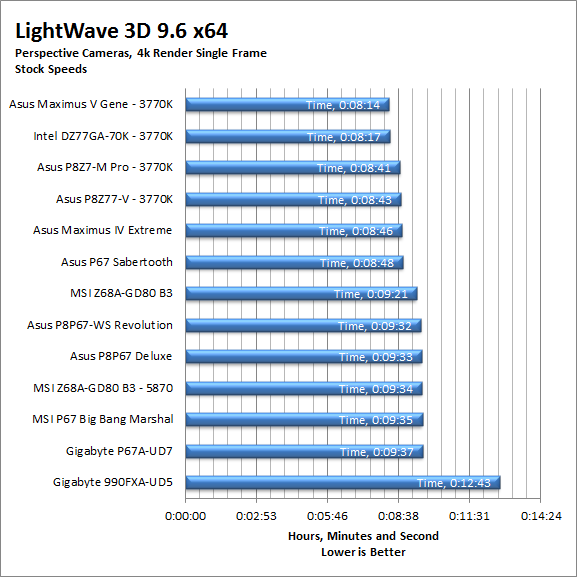
LightWave 9.6 can be very rough on a system especially if your memory performance is not where it should be. We are seeing one of those applications where a fast HDD is not going to improve your base performance. This does not mean that you won’t get a little bit back, but you are not going to get the same return you would using another application. The P8Z77-V fell into line in fourth place for both stock and overclocked testing. In practical terms we are seeing that the lower memory bandwidth can have a pretty negative impact on memory dependent applications (as you probably already knew), but it also means that as the memory is put under load (more applications run concurrently) you will see this board slowdown before you would see it on another board like the Gene or the DZ77GA-70K. We do hope that Asus does fix this issue in a BIOS update soon.
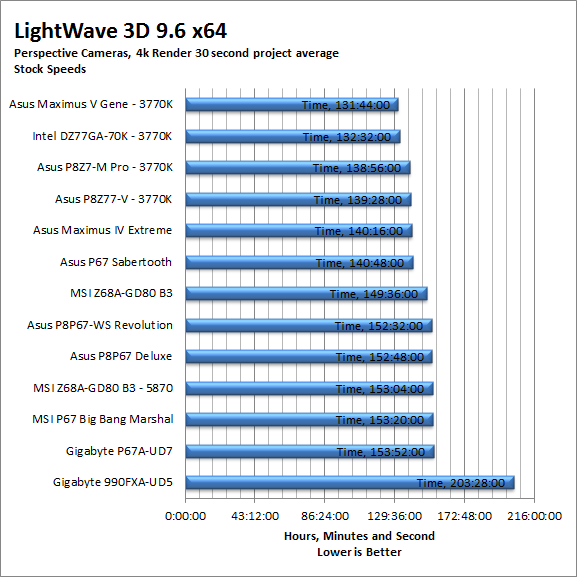
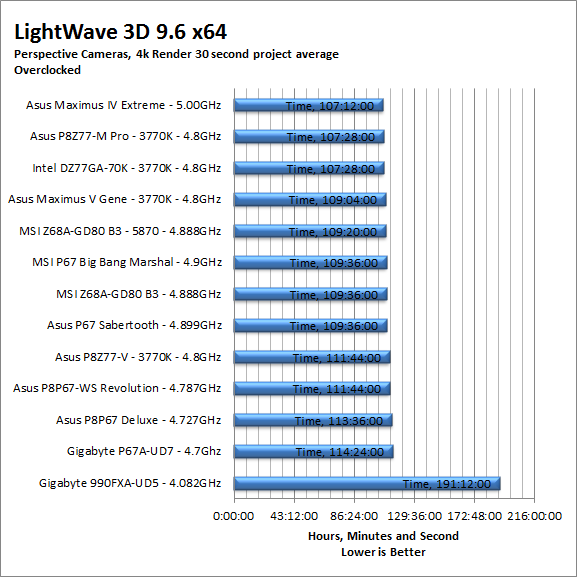
CyberLink Media Espresso 6.5 -
After having various issues with AutoGK and Intel CPUs with more than four cores we have changed our Media Encoding test to use Media Espresso from CyberLink. Although this new utility does not have the same ability to transfer directly from DVD it is still a good test to transfer different media types into a usable format for your iPad, iPod, or other media player. Our test involves using multiple (Six) 20 minute media files and transcoding them for an iPad. This gives us a very good indication of how well a motherboard can handle this type of work load.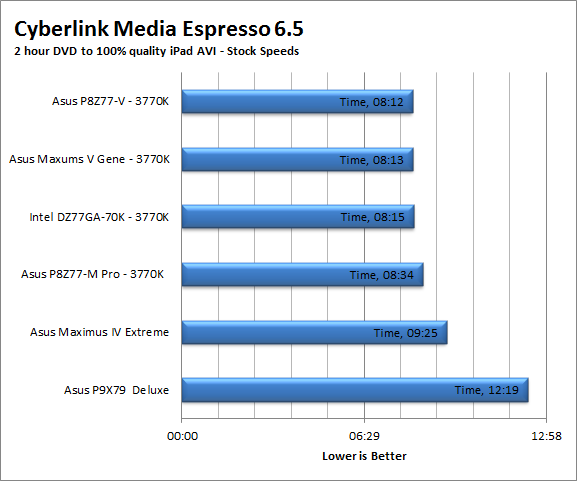
For Transcoding the P8Z77-V does very well at stock speeds (which is odd considering the memory performance that we saw), but then falls well behind when we overclocked the system. Unless we are missing the mark here we are betting that this is due to an issue with the SATA 2 controller on the board (we had the images on a drive that was plugged into the PCH SATA 2 controller) To check this we found that while overclocked the transfer speed between the image drive and the target drive was much slower than what we saw at stock speeds even though the RAW read numbers did not indicate this.
Section IV Performance
Gaming
Gaming as a test of motherboard performance is sort of a joke these days. The big player in the gaming arena is the GPU. Everyone but a few hardcore PR teams know this. However, it is important to run at least a few (one from each current DX version) to see if there are any issues with the combination of components on a motherboard. These are items like Audio lag, memory lag and of course problems with the PCIe lanes and signal traces. If there are issues in design, drivers or BIOS then you can have odd gaming performance. So without much more preamble let’s dive into the three games we currently use; Call of Duty Modern Warfare 2 for DX9 FarCry 2 for DX10 and Battlefield Bad Company 2 for DX11.
Call of Duty Modern Warfare 3 DX9 -
As the third installment in the Modern Warfare franchise you are picking up some old roles while adding a couple of new ones as well. The game play is almost identical to what you are used to in Modern Warfare 2 as are the graphical settings. The AI is a little different thought it is still similar to the bar fight style AI we like in the Call of Duty series. For our testing we run the first mission (Black Tuesday) from start to finish. Settings are shown below
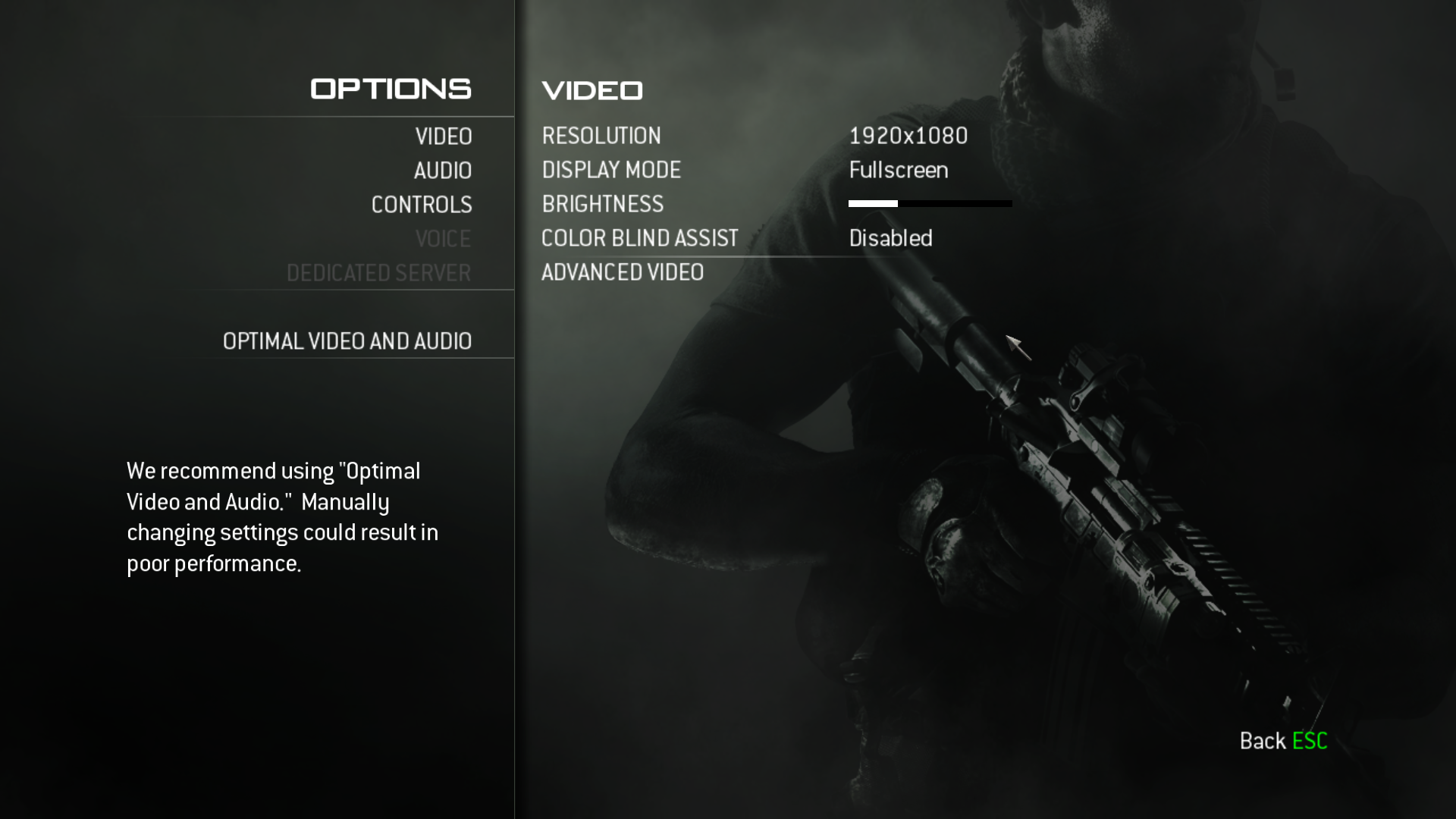 |
 |
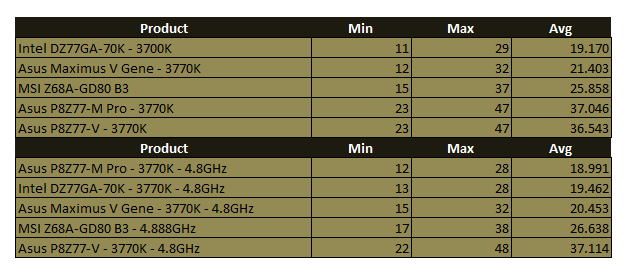
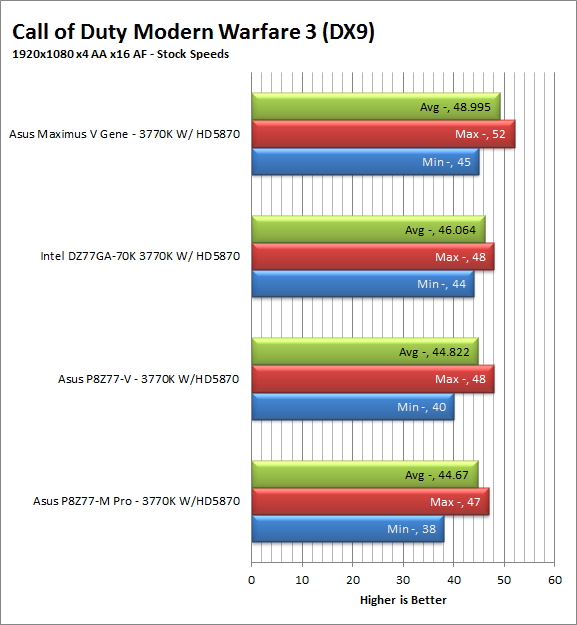
The IGPU gaming on the P8Z77-V was not that bad at all when it came to Modern Warfare 3. We found it at the head of the pack for both stock and overclocked speeds. When we dropped in our HD 5870 the P8Z77-V was a little behind the curve and came in third out of the four boards we tested. 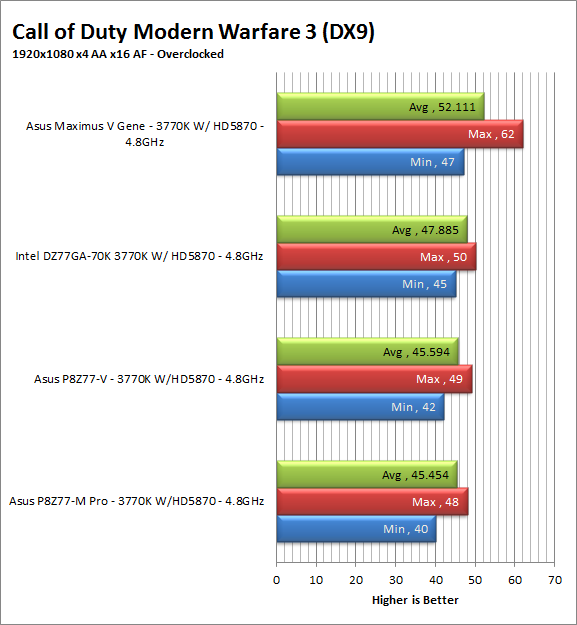
FarCry2 DX10 -
Although not one of my favorite games this tedious game does have some good graphics. The large sandbox style of the game lends to mission based play. The only problem is that the AI is rather low grade. Still the more CPU power the more the bad guys try to do. Over all the game was a little bit of a disappointment to play, but still not a bad DX10 representation. Our testing run starts right after you get your first mission to clean out the safe-house and ends after the hostage rescue. Settings and performance numbers are shown below.
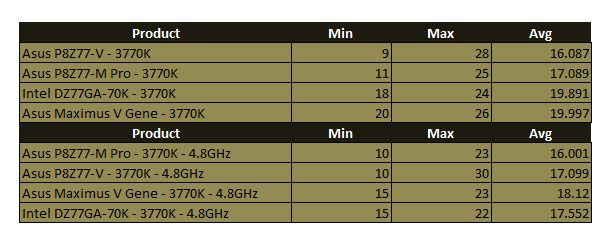
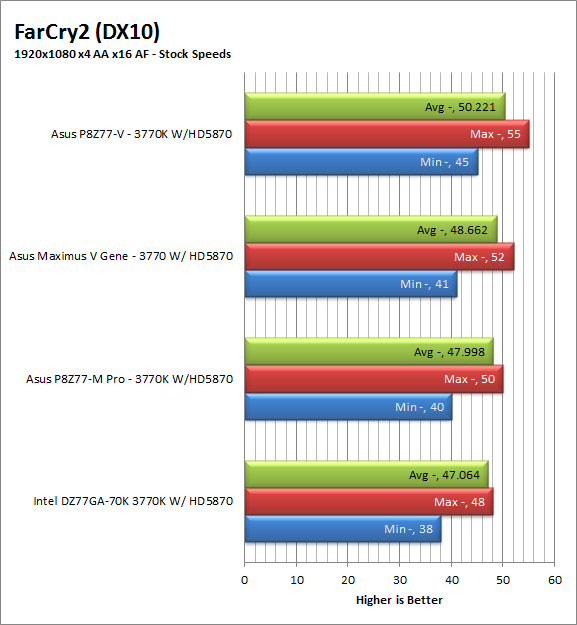
The IGPU gaming in Far Cry 2 was not good, but then again considering the fact that the GMA 4000 was not meant for this type of game it is ok. When we dropped in the HD5870 the board did much better and found its way to the top of the group.
Crysis 2 DX11 –
Another sequel Crysis 2 follows up on two other Crysis games (making the title a little misleading). You take the role of a Force Recon Marine who is given a battle suit by a character named Profit (you will remember him from the other two Crysis games). From there you run around an Infected and Invaded New York City trying to survive and, of course, save the planet. For our testing we ran through the first “mission”. Settings are shown below.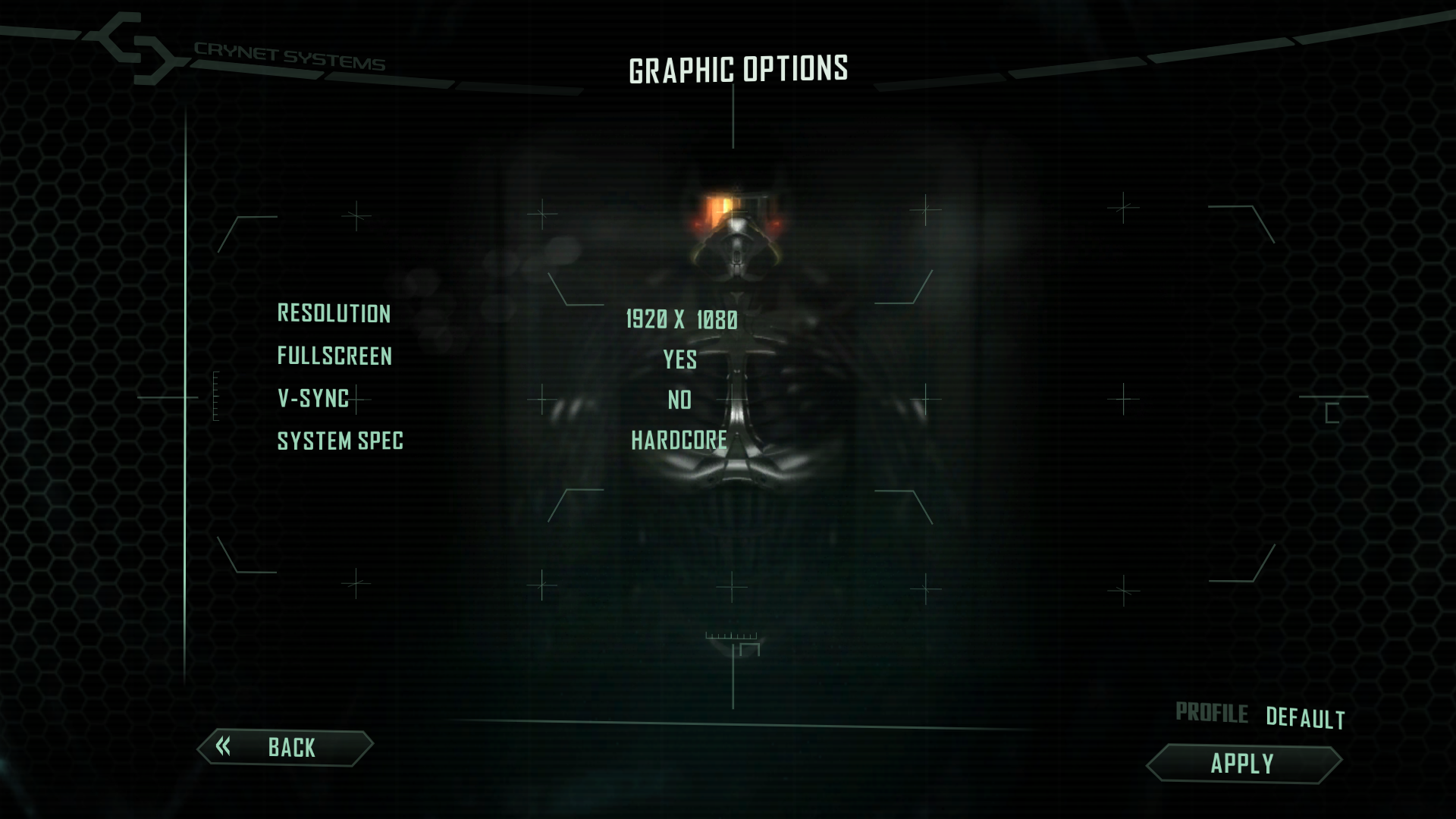


Crysis 2 also put a serious hurting on our P8Z77-V with the iGPU in the lead. Unfortunately unlike the performance comeback we saw with Far Cry 2 we found that even running the HD5870 did not put the P8Z77-V on top. 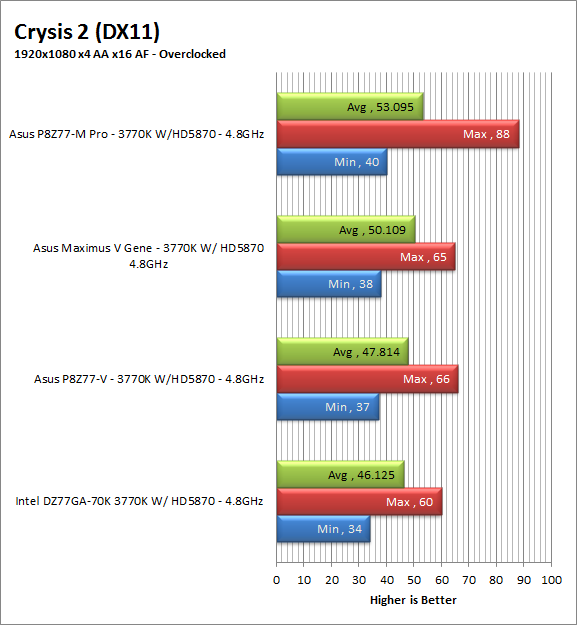
Gaming wrap-up -
Although we established a “winner” for each of the three games we use for testing as you can easily see they are so close that you would not really be able to tell them apart. Where the P8Z77-V stands out is in some of the options you have. Using Network iControl we were able to reduce our ping times in online gaming to make things much smoother while the audio enhancing DTS software helped to bring out the gaming experience in another way.
Value -
Value is another very subjective topic. What is expensive to some might be a deal to others. You can look at this topic in multiple ways. One is raw price and the other is what you get for the money. Each is accurate and both are correct ways to look at price/value. We tend to look at features, performance and real-property when we discuss value. However, we also take into account the raw cash cost of the item. At $145 from most online stores the P8Z77-V is a solid value for someone looking for a full sized ATX board with a few extra features under the hood. The price is actually a little less than many other products in the same category and only adds value with features like the Wi-Fi GO!, Network iControl, Intel LAN and more.
Conclusion -
As we have moved through the lineup of Asus’ Z77 motherboards we are finding that they are truly living up to what they stated to us at CES two years ago (and yes we have said this before). Asus is going to begin to push the enthusiast class design, components and features into their channel line. The difference is going to be that they are not going to dump everything into each board. While there is nothing wrong with using high-end components in their mainstream line, you would not want to drop in features and accessories that are going to push the price too high or that will be wasted on the end-user. It is this mindset that Asus is putting into action with their Z77 boards. The P8Z77-V is one of this line and it falls nicely into place above boards like the P8Z77-M Pro, but under the –V Deluxe and the Maximus V Gene. The performance is also in line with the market space and the price you are paying. We do expect to see Asus fix the stock memory performance issue that we noted here as well as to dial in on a few other items. Over all you really are getting a solid board for a good price including good gaming (with an add-in GPU), solid multi-purpose use, excellent image manipulation and even transcoding. When you add in some of the features like Wi-Fi GO! is really ties things up nicely. 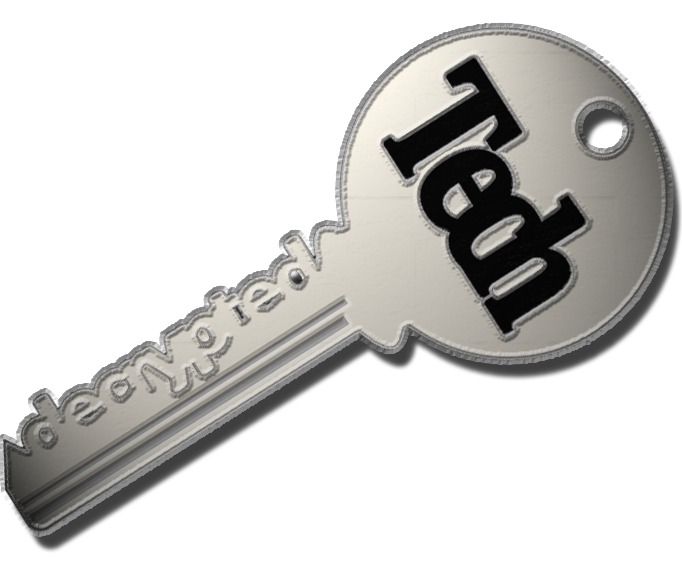
For its mix of performance, value and features the Asus P8Z77-V earns our Silver Key award.
Discuss this in our Forum

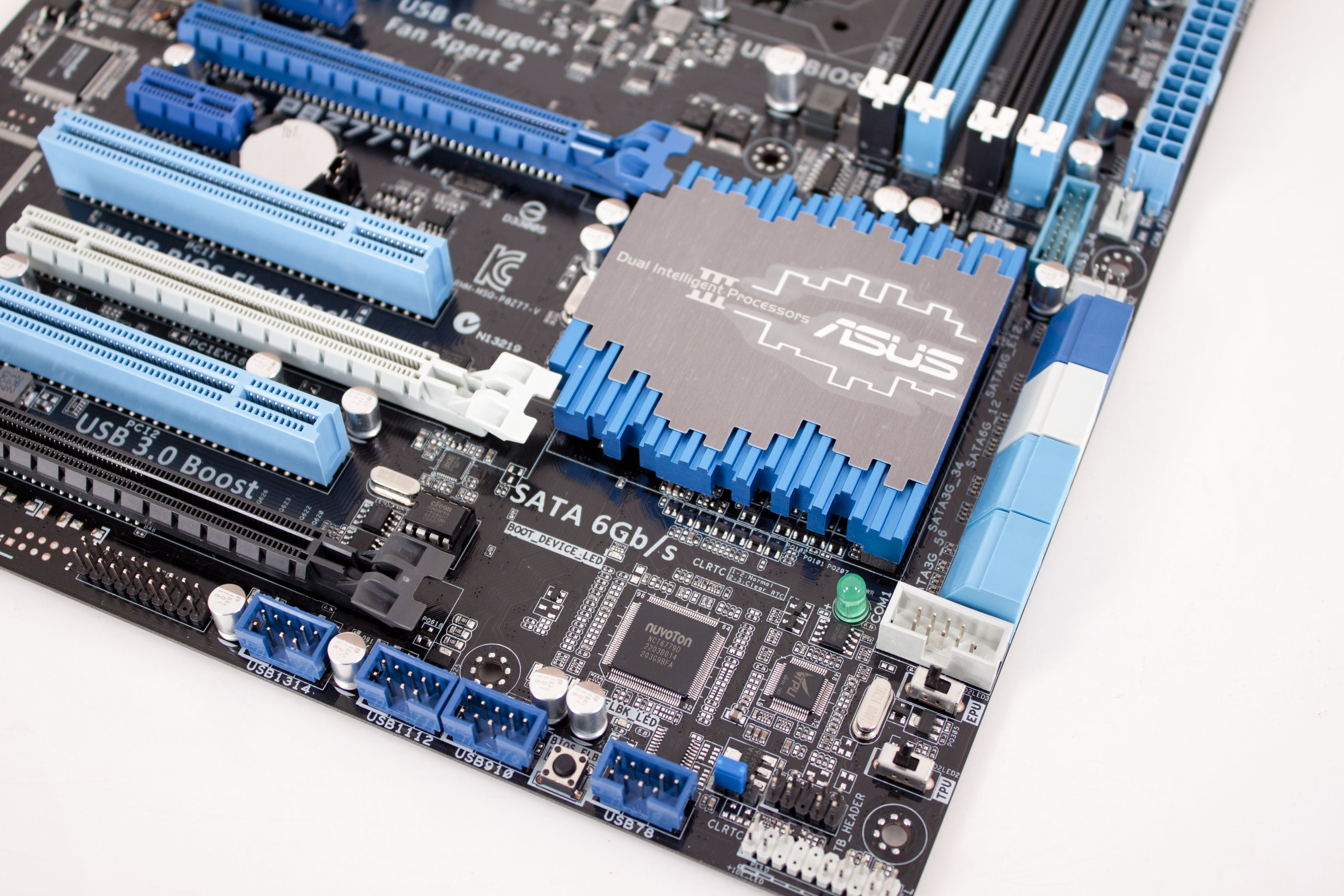 So now that we have covered all of the
So now that we have covered all of the 

